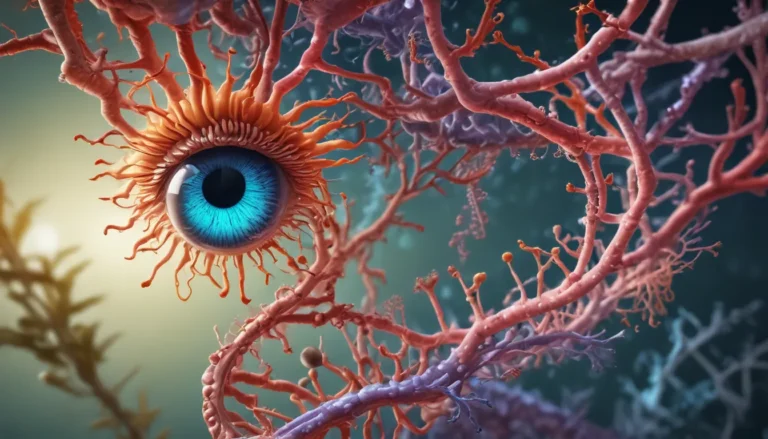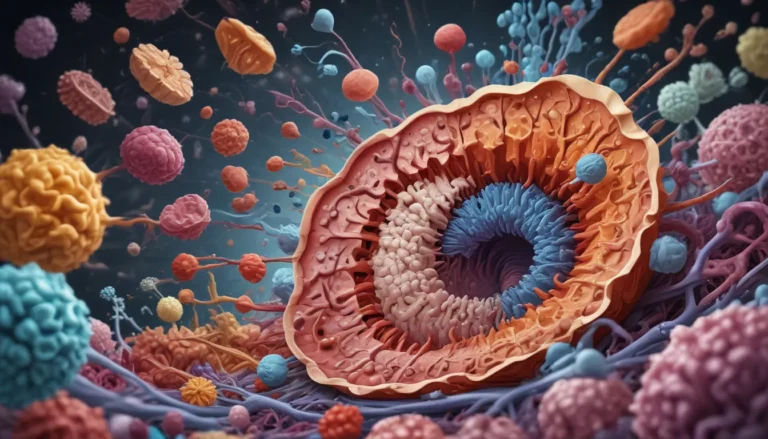A Note About Images: The images used in our articles are for illustration purposes only and may not exactly match the content. They are meant to engage readers, but the text should be relied upon for accurate information.
Are you curious about the intricate signaling cascade that governs essential cellular processes such as growth, development, and stress response? Look no further than the MAPK (Mitogen-Activated Protein Kinase) pathway. This pivotal pathway in cell biology plays a vital role in regulating various biological functions, from cell differentiation to disease development. In this comprehensive guide, we will delve into the fascinating world of the MAPK pathway, exploring its multiple forms, activation mechanisms, and therapeutic potential. Join us on this enlightening journey as we uncover the surprising facts about the MAPK pathway and its impact on cellular signaling and human health.
The MAPK Pathway: A Signaling Marvel
The MAPK pathway, also known as the Mitogen-Activated Protein Kinase pathway, serves as a critical signaling network within cells, orchestrating processes like cell growth, proliferation, differentiation, and apoptosis. This intricate pathway acts as a molecular traffic controller, guiding cells’ responses to internal and external signals and maintaining cellular balance. Without the MAPK pathway, our cells would struggle to function optimally, underscoring its significance in cellular physiology.
Diverse Subfamilies of the MAPK Pathway
One of the lesser-known facts about the MAPK pathway is its diverse subfamilies, each with specific functions and activation mechanisms. The extracellular signal-regulated kinases (ERKs), c-Jun N-terminal kinases (JNKs), and p38 kinases are prominent members of the MAPK pathway family, regulating distinct cellular responses in response to various stimuli. This diversity highlights the pathway’s versatility and adaptability in meeting the diverse needs of the cell.
Activation Mechanisms of the MAPK Pathway
The MAPK pathway exhibits a remarkable ability to respond to a wide array of extracellular signals, ranging from growth factors and hormones to stress signals and physical stimuli. This diversity in activation mechanisms enables the pathway to integrate signals from the cell’s environment and mount appropriate responses to maintain cellular homeostasis. The MAPK pathway acts as a molecular conductor, orchestrating cellular functions in harmony with the external cues it receives.
Role of the MAPK Pathway in Cell Development and Disease
Understanding how the MAPK pathway impacts cell development and differentiation is crucial for unraveling its role in human health and disease. From stem cell maintenance to tissue formation, the pathway’s influence extends far beyond simple cell growth. However, dysregulation of the MAPK pathway has been implicated in diseases like cancer, where mutations or aberrant activation of pathway components can lead to uncontrolled cell proliferation. By dissecting the molecular mechanisms underlying these disease processes, researchers hope to develop targeted therapies to combat these life-threatening conditions.
Neurological Functions and the MAPK Pathway
The MAPK pathway’s involvement in neurological functions adds another layer of complexity to its already multifaceted role in cellular signaling. Synaptic plasticity, essential for learning, memory, and information processing in the brain, relies on the proper functioning of the MAPK pathway. Malfunctions in this pathway have been linked to neurodegenerative disorders like Alzheimer’s and Parkinson’s diseases, underscoring the critical nature of its regulation in maintaining brain health.
Feedback Mechanisms Regulating the MAPK Pathway
To prevent excessive activation and maintain cellular balance, the MAPK pathway is tightly regulated by feedback mechanisms. Negative feedback loops act as safeguards, ensuring that the pathway’s activity is finely tuned to meet the cell’s needs without causing harm. By understanding these feedback mechanisms, researchers can gain insights into how to modulate the pathway for therapeutic purposes and prevent unwanted cellular outcomes.
Exploring Therapeutic Interventions Targeting the MAPK Pathway
The potential for therapeutic interventions targeting the MAPK pathway is a promising area of research. Scientists and clinicians are actively exploring ways to modulate the pathway’s activity to develop novel treatments for cancer, neurodegenerative disorders, and immune-related diseases. By harnessing the pathway’s innate signaling capabilities, researchers aim to unlock new therapeutic strategies that could revolutionize the treatment of these challenging conditions.
Unveiling the Promise of the MAPK Pathway
In conclusion, the MAPK pathway stands as a testament to the complexity and versatility of cellular signaling. Its role in coordinating essential biological functions, from cell growth to disease development, underscores its importance in modern biology and medicine. By unraveling the surprising facts about the MAPK pathway, we gain a deeper appreciation for its role in shaping cellular responses and driving therapeutic innovation. As researchers continue to explore its intricacies, we stand to gain valuable insights into how to harness its power for the benefit of human health and well-being.
FAQs: Exploring the MAPK Pathway
-
What is the MAPK pathway’s importance in cellular biology?
The MAPK pathway plays a crucial role in regulating various cellular processes, including growth, differentiation, and response to external signals. Its significance lies in its ability to coordinate essential functions within cells and maintain cellular homeostasis. -
How does the MAPK pathway get activated?
The MAPK pathway can be activated by a diverse array of extracellular signals, ranging from growth factors and hormones to stress stimuli. These signals initiate a series of molecular events that culminate in the activation of the pathway and subsequent cellular responses. -
What are the downstream targets of the MAPK pathway?
The MAPK pathway phosphorylates and activates downstream targets, including transcription factors, kinases, and other signaling molecules. These targets mediate various cellular responses, such as gene expression, cell proliferation, and apoptosis. -
Is the MAPK pathway conserved across different organisms?
Yes, the MAPK pathway is evolutionarily conserved across various organisms, highlighting its fundamental importance in cellular physiology. From plants to animals, this pathway regulates essential cellular processes throughout the biological kingdom. -
Can dysregulation of the MAPK pathway lead to diseases?
Yes, dysregulation of the MAPK pathway has been implicated in diseases like cancer, neurodegenerative disorders, and autoimmune conditions. Understanding the underlying molecular mechanisms of pathway dysfunction can pave the way for developing targeted therapies for these diseases. -
Are there existing drugs that target the MAPK pathway?
Yes, targeted therapies that modulate specific components of the MAPK pathway are available for certain diseases, particularly cancer. These drugs show promising results in managing diseases where the pathway is dysregulated, offering new avenues for treatment and patient care.
The MAPK pathway unveils a world of wonder in cellular signaling, offering insights into the intricate mechanisms that govern our biological functions. By exploring its diverse forms, activation mechanisms, and therapeutic potential, we gain a deeper understanding of how this pathway shapes our health and well-being. Join us as we unravel the mysteries of the MAPK pathway and unlock its potential for advancing medical research and improving patient outcomes.






